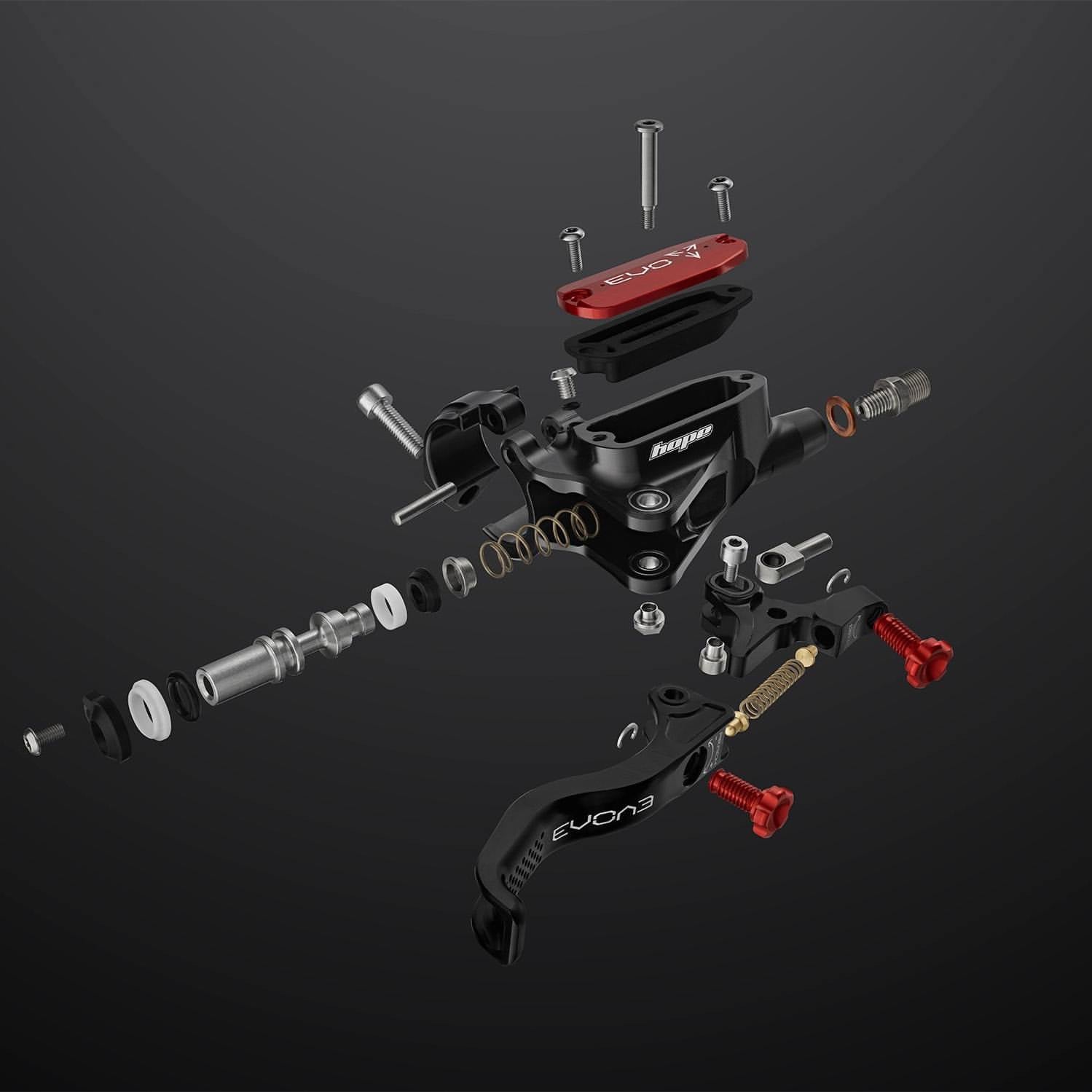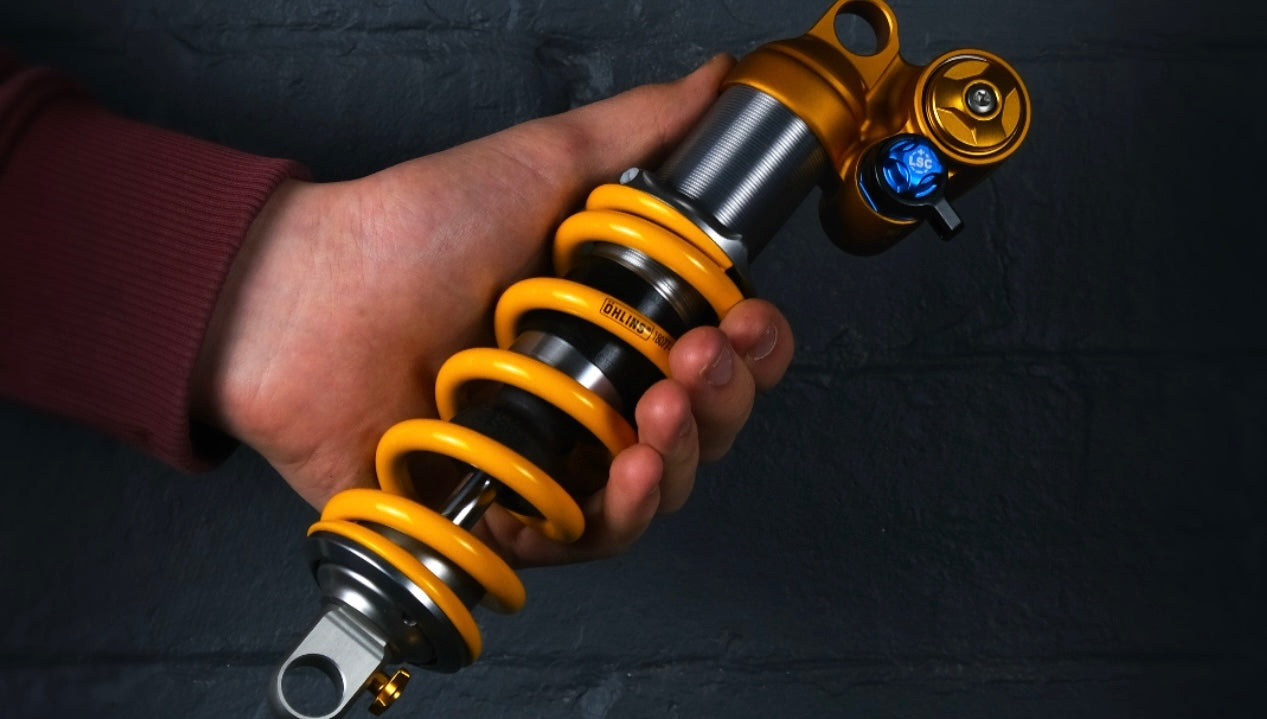
Gavin Richardson
30 Jan 2024
No More Wobbles! Discover the Technique to Tighten Your Bike Headset in Minutes!
Hey fellow riders! Today, let's dive into the nitty-gritty of bike maintenance and tackle a common issue that can be a real headache if not addressed properly: a loose headset.
As a bike mechanic loose headsets are something we see pretty often. This can lead to premature headset wear meaning you may need a whole new headset if left unatended.
I'm here to guide you through the process of tightening your headset with ease. This means you will be able to catch and diagnose the issue before it causes any damage.
Quick Guide
- Loosen stem bolts
- Tighten top cap bolt (Until the play is removed)
- Ensure stem is straight with wheel
- Tighten stem bolts (torque to spec)
- Check for play
- Ride your bike!
How to Adjust your Headset
How Does it Work?
Bearing compression- There is a slight gap between the top cap and the stearer tube. When the top cap is tightened it preloads the bearings by pulling the stearer tube upwards. without the gap it wouldn't be able to do this and would have play still.

Assessing the Situation
Identify Looseness - Hold the front brake and gently rock the bike. Check for any steering looseness or subtle clicking sounds. Feel the top or bottom of the headset for play.
Tools You'll Need
Here's a detailed list of the tools you'll need to ensure you're well-equipped for the task at hand:
- 4mm, 5mm or 6mm Allen Key: These tools are your go-to for loosening and tightening your headset. Some stems may use a 4mm, some may use a 5mm. When it comes to the top cap, this could be a 4,5 or 6mm. So make sure to check on your stems specific sizes
- Torque Wrench: A torque wrench will provide precision when tightening your stem bolts. This tool ensures you apply the correct amount of force, preventing over-tightening or under-tightening. Most stems will have the torque spec printed on the stem.
- Bike Stand (Optional): Elevate your bike off the ground using a bike stand to make the process more manageable. A stable base makes adjustments smoother and safer.
Identifying The Bolts
Top Cap Bolt: Located at the top of your stem, the top cap bolt secures the top cap onto the steerer tube.

Stem Bolts: The stem attaches the handlebars to the steerer tube. There are typically 2 stem bolts, and they secure the stem onto the fork's steerer tube.

Loosen The Bolts:
Working with Stem Bolts - Start by loosening the stem bolts on either side of the stem with an Allen key. Ensure they are loose enough for the handlebars to move independently from the front wheel.

Tightening The Top Cap Bolt
Top Cap Adjustment: With your Allen key, gently tighten the top cap bolt. This is a delicate dance – aim for snugness without overtightening. The goal is to eliminate any play in the headset while maintaining smooth movement.
Pro Tip: As you tighten, feel for resistance without making it too hard for your handlebars to turn freely.
Feel the Play: Give your bike a rock forwards and backwards, holding the front brake. If you feel any play or wobbling, you'll need to make additional adjustments. Remember, it's all about finding that sweet spot. Repeat the process adding an extra smidge of tightness until the play disapears

Checking the Headset
Ensuring Stability - Hold the front brake and rock the bike again. Check for any play or movement in the headset. Before tightening stem bolts, ensure the stem is straight.
Tightening Stem Bolts
Alternate Tightening Pattern: Using your Allen key, begin tightening the stem bolts in a balanced and alternating pattern. This method ensures even pressure distribution and avoids putting stress on one side of the stem.
Ensure to use your torque wrench set to the specified torque for your stem.
Diagnosis
Still having issues even though the headset is tight? Lets diagnose what that could be..
Bearings: Your bearings could be worn and need replacing. In this case the play is in the actual bearing itself.
Stearer tube: If you have put a new headset on or changed your spacers/stem etc, your stack height might be incorrect. This means the headset will get tight but the play wont go, as the top cap actually hits the top of the seat tube.
You have two options here, you can add a small stem spacer or take a small amount off the stearer tube with a saw.
If your not confident enough to do this take it to your local bike shop.
Incorrect assembly: If you have removed your forks ensure everything goes back together as it was previously. Failure to put components back together correctly could cause play.
Frequently Asked Questions
Can I ride my bike with a loose headset?
Riding with a loose headset is not recommended. It can compromise your control, stability, and safety. Always ensure your headset is snug before hitting the road/trail
How do I know if my headset is loose?
Look out for signs such as a wobbly front end, unusual noises, or a lack of responsiveness in the steering. These indicators suggest a potential issue with your headset that needs attention.
Do you tighten the stem or top cap first?
Always start by tightening the top cap first, while the stem bolts are loose. Once snug, proceed to tighten the stem bolts. This sequence ensures proper compression of the headset bearings.
Final Word
Tightening your bike headset is a simple yet vital task for a stable and secure ride. By following these steps and using the recommended tools, you'll ensure optimal performance and longevity of your bike's bearings.
MEET THE AUTHOR
GAVIN RICHARDSON
Some say Gavin invented the wheel. They are lying of course, but he does build a mean set.
Chief of Cykel House, aging rider and father of 3. Gavin has been riding the majority of his life in multiple different forms. He created Cykel House out of passion and enthusiasm for the sport which cannot be matched.
Always on the hunt for the best products and latest trends his finger is right on the pulse.
Interesting fact - Gavin won a handwriting competition at age 7. What a legend.
Likes - A well built berm, beer and raw sprouts
Dislikes - Stainburn woods, headset cable routing and lycra





Comments